Accidents happen—even when we’re trying to be as careful as possible. Whether you spilled gasoline on your leather shoes when filling up the tank, noticed a few drops of gasoline after walking through a puddle at the gas station, or had some other mishap resulting in fuel-stained footwear, don’t despair! Extracting gasoline from leather shoes may seem like a difficult task, but with the proper steps and supplies, it can be done quickly and easily. Keep reading for tips on how to get gasoline out of leather shoes
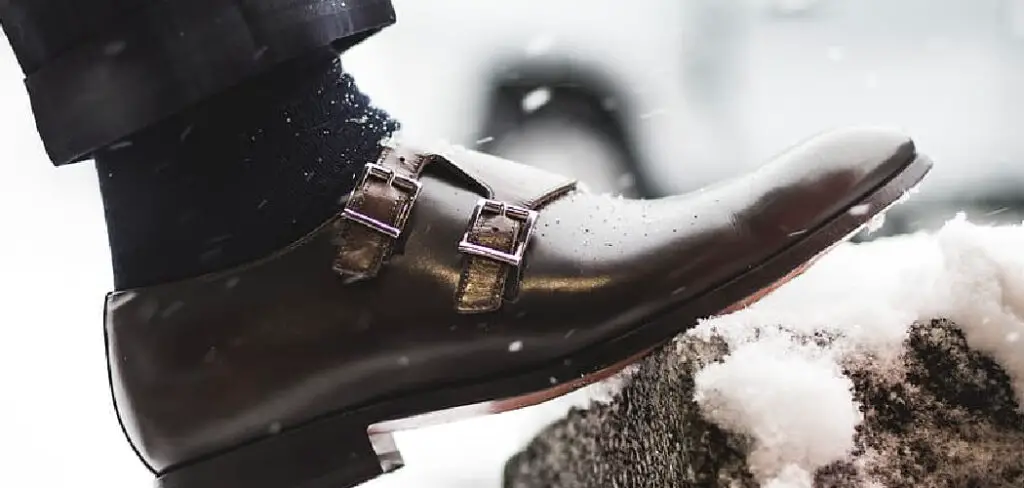
Needed Materials
Given below are some materials you will require for the process:
Rubbing Alcohol
This is an effective way to break down the gasoline molecules, making it easier to remove them.
Absorbent Towels
Dry absorbent towels can be used to blot away any excess gasoline and keep the shoes from becoming too wet.
Clean Cloths
For wiping off and buffing the leather once it has been cleaned.
Olive Oil
Applied to the leather after it has been cleaned, this will help to nourish and condition the material.
Step by Step Guidelines on How to Get Gasoline Out of Leather Shoes
Step 1: Absorb Excess Gasoline
Using an absorbent towel, lightly dab at the gasoline-stained area to soak up any excess fuel. If the gasoline has already soaked into the leather, try not to press it too hard as this could cause further penetration. It’s important to take your time here to avoid making the stain worse. This should help to remove some of the gasoline and reduce the amount that needs to be removed.
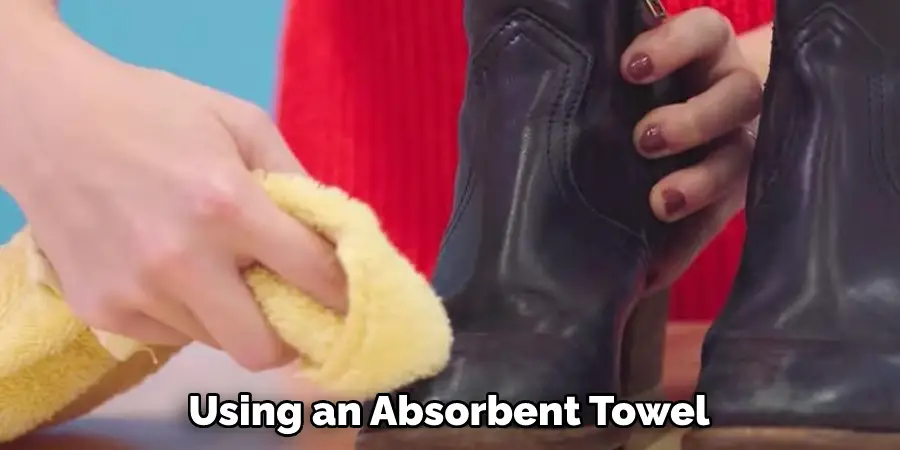
Step 2: Apply Rubbing Alcohol
If the gasoline has soaked into the leather, use a cloth to apply some rubbing alcohol to the affected area. But be careful not to saturate the leather as this could cause damage. Allow a few minutes for the alcohol to work its magic, breaking down the gasoline. It’s also important to remember that rubbing alcohol is flammable, so be sure to use it in a well-ventilated area.
Step 3: Blot with a Dry Towel
Once the rubbing alcohol has had time to break down the gasoline molecules, use a dry cloth to blot away any remaining liquid. It’s important to use a clean and dry cloth here, as any dampness could cause the leather to become discolored. This should help to remove the bulk of the gasoline, although there may still be some residue left behind.
Step 4: Wipe Away Excess Moisture
Using another clean cloth, wipe away any remaining moisture from the leather surface. Be sure not to rub too hard, as this could damage the material. If the leather feels dry, you can move on to the next step. If not, be sure to use a clean cloth and continue blotting until all remaining moisture is gone.
Step 5: Apply Olive Oil
To condition and nourish the leather after being exposed to gasoline, apply some olive oil directly to the surface of the leather shoes and lightly massage it with a soft cloth. It’s important to not use too much oil—just enough to lightly coat the leather is all that is needed. If the leather feels dry after applying the oil, you can add a little more. This should help to restore the leather’s natural shine and protect it from further damage.
Step 6: Let Shoes Air Out
Allow your shoes to air out for at least 24 hours before wearing them. This will give the olive oil time to properly condition and nourish the leather, as well as allow any remaining gasoline particles to evaporate. If you can, place the shoes in a sunny spot to speed up the drying process.
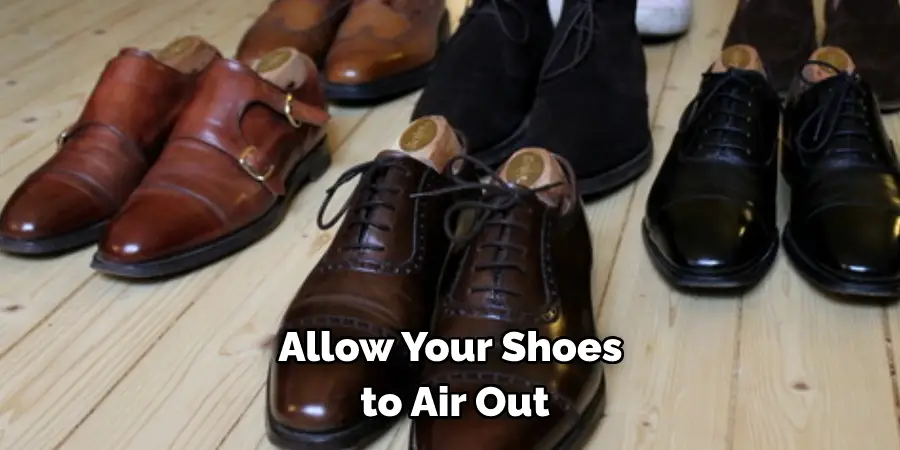
It’s important to let the shoes air out for at least 24 hours, as any remaining gasoline particles could be flammable.
Step 7: Buff Shoes
Once your shoes have had time to air out, use a clean cloth to buff away any excess oil and restore their natural shine. This should help to remove any remaining gasoline particles and leave your shoes looking good as new. If there are any stubborn stains remaining, you can use a leather cleaner to help tackle them.
Step 8: Wear Shoes
Your leather shoes are now safe to wear again! However, it’s important to remember that gasoline is highly flammable and can cause serious harm if not handled properly. If any gasoline residue remains on your shoes, do not attempt to wear them until they have been properly cleaned. It’s also a good idea to use a leather conditioner on your shoes after every cleaning session to help protect them.
Step 9: Repeat If Necessary
If the gasoline stain is still present after following the steps above, repeat them until it has been removed. But be sure to take your time and use gentle pressure when blotting the stain to avoid damaging the leather. You may also want to consider using a professional cleaning service if the stain persists.
Step 10: Have Shoes Professionally Cleaned
If you are still unable to remove the gasoline from your leather shoes, it’s best to have them professionally cleaned. This will ensure that the gasoline is completely removed and that your shoes are safe to wear again. If you do opt for professional cleaning, make sure to choose a reputable company that specializes in leather care.
Step 11: Prevent Future Issues
To prevent future issues with gasoline stains, always wear protective footwear when refueling your vehicle or walking through puddles of fuel at the gas station. But if you do happen to get gasoline on your leather shoes, now you know how to properly clean them. Just remember to take your time and use the steps above to get gasoline out of leather shoes safely and effectively.
Step 12: Store Shoes Properly
When storing leather shoes, be sure to store them in a cool, dry place. If possible, place them in a cloth bag to protect them from dust and moisture. It’s also important to use a leather conditioner on your shoes after every cleaning session to help protect them from future damage. By following these tips, you can help keep your leather shoes looking great for years to come.
Step 13: Clean Regularly
Regular cleaning and conditioning of your leather shoes will help to keep them looking their best. Use a mild leather cleaner and conditioner, as harsh chemicals can damage the material. Always follow the’s instructions when cleaning your shoes and make sure to let them air out after every use.
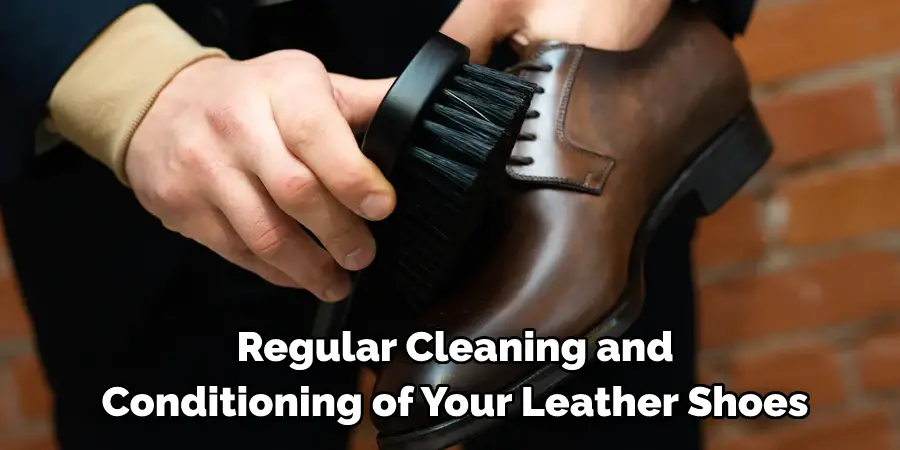
By following these steps on how to get gasoline out of leather shoes, you can easily and effectively get gasoline out of leather shoes. Be sure to wear protective footwear when dealing with fuel and remember to store them properly when not in use. With proper care, your leather shoes can last for years to come.
Do You Need to Use a Professional?
If the gasoline stain is difficult to remove, it’s best to have the shoes professionally cleaned. A professional cleaner will be able to ensure that the gasoline is completely removed and that your shoes are safe to wear again. If you need more advice on how to handle gasoline stains, consult a leather specialist. It’s always better to be safe than sorry when dealing with fuel!
How Much Will It Cost?
The cost of professional leather cleaning will vary depending on the type and amount of damage. However, it is usually much cheaper than replacing the shoes entirely. Most leather specialists will be able to give you an estimated cost before beginning work. If the cost is too high, look for other options such as DIY cleaning methods or asking a friend to help. It could cost you less money in the long run.
Frequently Asked Questions
Q: What type of leather is best for cleaning gasoline stains?
A: All types of leather can be damaged by gasoline, so it’s important to take extra care when cleaning it. The best type of leather for cleaning gasoline stains is full-grain or top-grain leather, as it is less prone to damage.
Q: Is There Anything Else I Should Do to Prevent Gasoline Stains?
A: Yes! Wear protective footwear when refueling your vehicle or walking through puddles of fuel. It’s also important to clean and condition the shoes regularly to keep them looking their best. Finally, store the shoes in a cool, dry place when not in use.
Q: How Long Does It Take to Get Gasoline Out of Leather Shoes?
A: The amount of time it takes to get gasoline out of leather shoes will depend on the severity of the stain and how much fuel is present. However, if you follow the above steps and clean your shoes frequently, it should take no more than a few hours.
Q: Can I Use a Leather Cleaner on The Shoes?
A: Yes, you can use a leather cleaner to remove gasoline from the shoes. However, make sure it is mild and specifically designed for leather. Harsh chemicals can damage the material, so be sure to read the label before using any product.
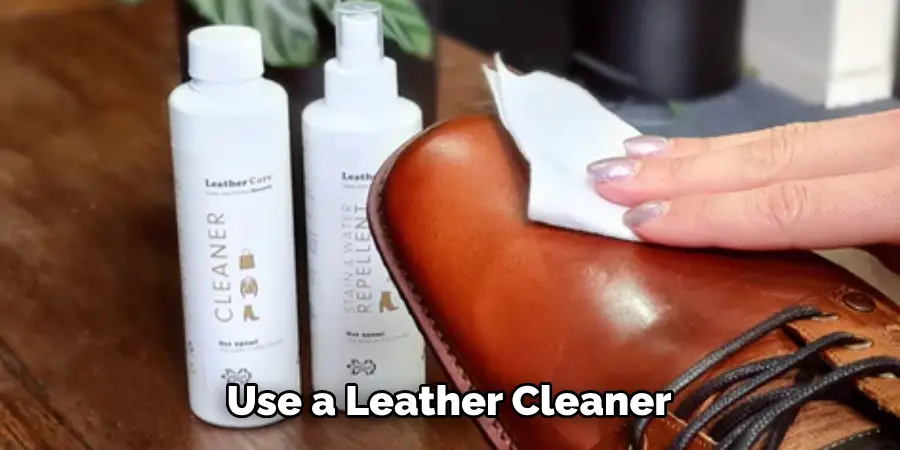
Conclusion
Thanks for reading this article on how to get gasoline out of leather shoes. Keeping gasoline from permanently staining your leather shoes can take a bit of extra effort and care, but with the right steps taken, it is possible. Treating your shoes quickly with a liquid dishwashing product, like Dawn, can help reduce the damage caused by gas spills. Layering baking soda over the stain and letting it sit for an hour before brushing it off can also help absorb the excess moisture and prevent discoloration.
As mentioned earlier, rubbing alcohol or pre-wash detergent treatments should be used only as a last resort as they can have negative effects on leather materials. Ultimately, preventing gasoline spills on your leather shoes is key to preserving their integrity and appearance. Invest in protective sprays and stains at the beginning of their wear to protect them from exposure to liquids that could cause permanent damage to your favorite pair of shoes.

